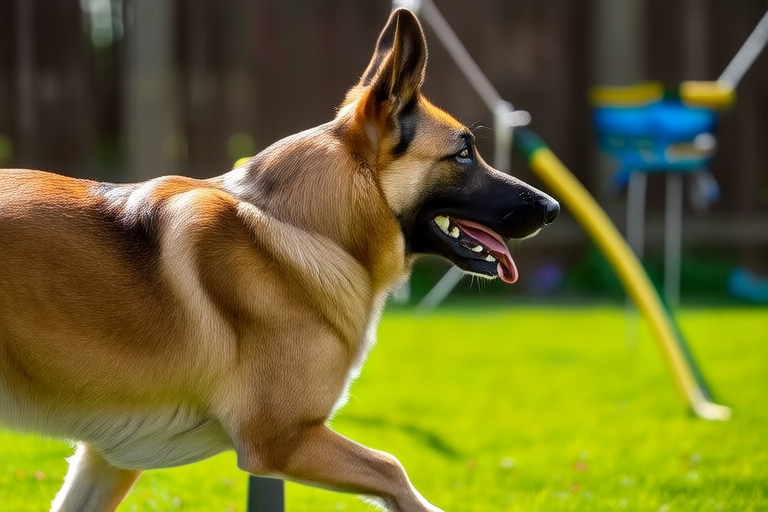How to Keep Your German Shepherd Active and Mentally Stimulated
German Shepherds are renowned for their intelligence, loyalty, and energy. These traits make them exceptional companions but also necessitate a robust regimen to keep them physically and mentally engaged. Ensuring your German Shepherd remains active and stimulated is crucial for their well-being, happiness, and behavior. This guide offers comprehensive advice on how to achieve this balance.
The Importance of Regular Physical Exercise for German Shepherds
German Shepherds are large, athletic dogs that require ample physical activity to maintain their health and fitness. Their strong bodies are built for endurance, making them ideal candidates for activities such as running and swimming.
Running: A Great Way to Burn Energy
Running is an excellent form of exercise for German Shepherds. It helps build muscle strength, improves cardiovascular health, and provides an opportunity for bonding between you and your dog. Ensure that runs are conducted in safe environments, such as parks or designated areas where there’s minimal risk of injury. Start with short distances and gradually increase the length and intensity as your dog grows more comfortable and fit.
Swimming: A Low-Impact Alternative
For those who live near water, swimming can be a fantastic alternative to running. It’s particularly beneficial for older dogs or those with joint issues, as it’s low-impact and helps maintain muscle tone without putting undue stress on the joints. Always supervise your German Shepherd when they’re in the water and ensure they wear a life jacket if necessary.
Mental Stimulation Activities for German Shepherds
Besides physical exercise, German Shepherds need mental challenges to keep their minds sharp and prevent boredom-related behaviors like chewing or barking excessively.
Puzzle Toys: Engage the Mind
Puzzle toys are great tools for mental stimulation. They challenge your dog to think critically and solve problems to retrieve treats or other rewards. Puzzle toys come in various forms, including treat-dispensing balls, food puzzles, and interactive feeding mats. Introduce these toys gradually, allowing your dog time to learn and enjoy the process.
Obedience Training: Building Skills and Bonding
Obedience training is essential for all dogs, but especially for intelligent breeds like German Shepherds. It not only teaches basic commands but also helps establish a strong bond between you and your pet. Training sessions should be fun and positive, using treats and praise as incentives. Incorporate new tricks and challenges regularly to keep the sessions interesting.
Daily Routines Balancing Physical Activity and Mental Challenges
Creating a balanced routine that includes both physical and mental activities is key to keeping your German Shepherd healthy and happy.
Scheduling Daily Walks and Playtimes
Daily walks and playtimes are vital components of your dog’s routine. Aim for at least one hour of combined walking and playing each day. Vary the routes and activities to keep things exciting. Consider incorporating fetch games, frisbee, or even agility courses if you’re feeling adventurous.
Rotating Activities to Maintain Interest
To avoid monotony, rotate the types of activities you engage in with your German Shepherd. This could mean alternating between different parks, trying out new sports, or even exploring new areas within your neighborhood. The variety will help keep your dog engaged and enthusiastic about each session.
Socialization and Interactive Play with Other Dogs
Socializing your German Shepherd with other dogs is important for their emotional development and overall well-being.
The Benefits of Social Interaction
Playing with other dogs allows your German Shepherd to practice social skills, learn boundaries, and develop confidence. It also provides a natural outlet for their energy, which can reduce destructive behaviors at home. Choose well-supervised playgroups or parks where you know the other dogs and their owners.
Encouraging Positive Interactions
When introducing your German Shepherd to new dogs, always do so in controlled environments. Gradually increase the duration and complexity of interactions as your dog becomes more comfortable. Encourage positive behaviors through praise and treats, reinforcing good manners and respect towards others.
Safety Considerations and Signs of Overexertion
While keeping your German Shepherd active and mentally stimulated is important, it’s equally crucial to prioritize their safety and well-being.
Monitoring for Signs of Fatigue or Injury
Watch closely for signs that your dog may be overexerted or injured during physical activities. Common indicators include excessive panting, limping, reluctance to move, or changes in behavior. If you notice any of these signs, take a break immediately and allow your dog to rest.
Ensuring Proper Hydration and Nutrition
Always provide plenty of fresh water before, during, and after physical activities. Proper nutrition is also vital for maintaining energy levels and supporting recovery. Consult with your veterinarian about appropriate dietary needs based on your dog’s age, weight, and activity level.
Safe Environments for Play
Choose safe environments for play and exercise. Avoid areas with sharp objects, toxic plants, or other hazards. Ensure that any equipment used during training or play is sturdy and appropriate for your dog’s size and strength.
Conclusion
Maintaining an active and mentally stimulated German Shepherd requires commitment but yields significant rewards in terms of health, happiness, and behavior. By incorporating regular physical exercise, mental challenges, and social interactions into your dog’s daily routine, you’ll foster a well-rounded, content companion. Remember to prioritize safety and monitor for signs of overexertion. With proper care and attention, your German Shepherd will lead a fulfilling and enjoyable life.
